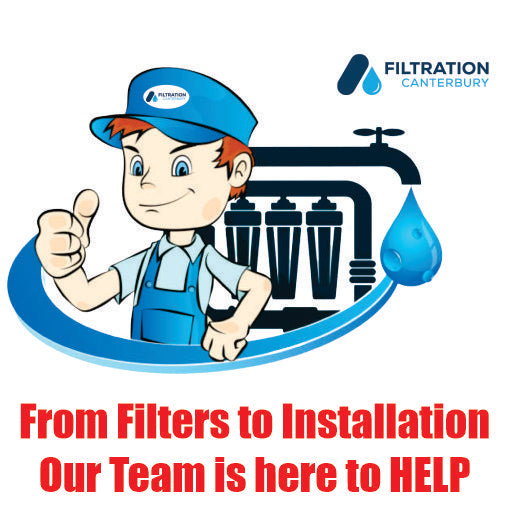Are you concerned regarding Nitrates in your Drinking water? Do you have a reason to be concerned?

What is Nitrate?
Nitrate (NO3) is a compound that is formed when nitrogen combines with oxygen. The main adult intake of nitrate is from food rather than water; but sometimes high amounts of nitrate get into drinking water.
What happens if Nitrate levels are to high in water?
Drinking water that has
high levels of nitrate can cause health effects such as: Methemoglobinemia or
"blue baby syndrome," which results from nitrate decreasing the blood's capacity to carry oxygen, especially in infants who receive baby formula mixed with water containing nitrate above 10 mg/L.
How do you remove Nitrate from tap water?
Nitrite can be removed from drinking water by reverse osmosis, distillation or ion exchange.
Boiling, carbon adsorption filters and standard water softeners do not remove nitrite
How do you fix high nitrate levels in well water?
Nitrates can be removed
from water by reverse osmosis, distillation, or through ion exchange resin. Nitrates are difficult contaminants to eliminate from water. Nitrates will not be removed by sediment filters, carbon filters, or by the hollow fiber membrane of an ultrafiltration system.
Do water filters remove nitrates?
The only way to remove
nitrates from drinking water is through a water filtration system. Many water treatment companies promote Reverse Osmosis (RO) systems as an immediate solution to
provide nitrate and nitrite reduction.
Is it safe to drink water with high nitrates?
When nitrate levels are
high, everyone should avoid long-term use of the water for drinking and preparing foods that use a lot of water. High levels of nitrate in drinking water may increase the risk of colon cancer.
Are nitrates in drinking water harmful?
Considering all studies,
the strongest evidence for a relationship between drinking water nitrate ingestion and adverse health outcomes (besides methemoglobinemia) is for colorectal cancer, thyroid disease, and neural tube defects.
What are the side effects of nitrates?
The most common side
effects of nitrates include headaches, dizziness or light-headedness, flushing or a warm feeling in the face.
What are possible health effects?
Nitrate is converted into nitrite by bacteria in the gut. This nitrite combines with foetal
haemoglobin in the foetus or infant less than 6 months old preventing oxygen from binding and being distributed around the body. Symptoms include blueness around the
mouth, hands, and feet, hence the name ‘blue baby’ syndrome and in severe cases can affect breathing and be life-threatening. By 6 months of age infants have only mature haemoglobin which does not bind to nitrite. This allows oxygen to freely bind to haemoglobin and ‘blue baby’ syndrome does not occur.
Fully breastfed infants are not affected as nitrites do not enter the breastmilk. Very few cases of ‘blue baby’ syndrome have been reported in New Zealand, though nitrates in groundwater have been rising in the last twenty years.
How does Nitrate get into water?
High levels of nitrate in water can be a result of runoff or leakage from fertilized soil, wastewater, landfills, animal feedlots, septic systems, or urban drainage.
-

Best water filter for Nitrate removal via 4 Stage Reverse Osmosis system | The Canterbury
$630.00
View product →Reverse Osmosis is the best filter to remove nitrates from your drinking water.
95% of nitrates will be eliminated by using this reverse osmosis filter.
If you are concerned about...
Automatic Nitrate Removal System
This point of entry water treatment system is designed to reduce Nitrates in water.
Comes in a range of sizes to suit households, farms, and water discharge
Reverse Osmosis - Nitrate removal
Reverse Osmosis Water Purifiers
The Reverse Osmosis unit provides ultra-pure water for those looking for the highest quality of filtered water in both rural and town water applications.
The unit will remove all contaminants including Lead, Chromium, Nitrates, Barium, Cadmium, as well as Virus.
The Reverse Osmosis water purification process is internationally recognised as being the most effective over the widest range of contaminants and the most economical compared to other available technologies.
This four-stage filtration process consists of a sediment filter Carbon filter Reverse Osmosis Membrane and a Post Carbon Filter.
This unit is easily installed by a handyman, or a plumber can install a unit in approximately 90 minutes.
How the Reverse Osmosis System works.
The source water passes through sediment and carbon pre-filtration before passing under pressure through the Reverse Osmosis (RO) membrane which is semi-permeable and could be described as like cling wrap rolled up with other layers to create the RO membrane.
The purification achieved is at a molecular level so even chemicals and contaminants and Virus’s that are totally dissolved in the water are separated from the hydrogen and oxygen molecules (that make up pure water) and are washed away to waste, leaving the pure water delivered and stored in the reservoir tank.
A minimum water pressure of 40psi.
The unit is suitable for town water as well as rural water supplies.
How it works.
Ideally the water should have already passed through a filter train before it reaches the point of use having a Total Dissolved Solids (TDS) of 2000ppm. The water needs to be microbiologically safe, and the unit is for cold water usage only.
- Water is drawn off the main water supply to supply a branch line to supply the filter train.
- Water is firstly passed through a particular removal filter to remove any dirt sediment sand and other physical particles that may be present in the water.
- It is then passed through a carbon filter block to further remove any other solids or sediments as well as chlorine if used in the water to disinfect.
- It then goes through a membrane filter which is rated at .0005 of a micron. (A micron is 1 millionth of a metre)
- Water is stored in a reservoir for storage and is drawn off when water is called for passing through a post Carbon filter to perform a final polish of the water and enhances the drinking water.
Running costs
It is recommended that the filters be changed on a regular basis, and this will depend on the usage of the unit the quality of the water and the condition of the water in your area.
- Primary Sediment filters should be changed as needed or every 6 months.
- Carbon pre- filter depends on the water usage but changed every 6 months
- If chlorine if this is used to disinfect as a rule, if the chlorine levels are at 0.2ppm then the following calculation should be used. 25000 litres x 0.15 per person in the household.
25000 litres x 0.15 x 4 persons replace every 15000 litres.
- In line Carbon filter usually changed every 12 months
- Reverse Osmosis Membrane filter changed at annually or as required.
System Dimesions: 40cm High x 34cm Wide x 14cm Deep
Tank Dimensions Mini 2.0G: 20cm Diameter x 34cm High
Tank Dimensions Small 2.2G: 24cm Diameter x 38cm High
Tank Dimensions Large 3.2G: 28cm Diameter x 38cm High






